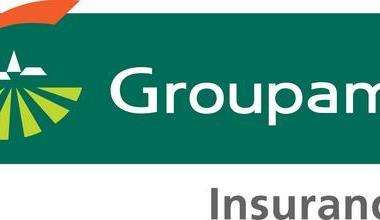Checking that your firm’s anti-bribery and corruption practices are up to date and effective is a new year’s resolution every broker could benefit from
Since the FSA fined broker giant Aon a record £5.25m in early 2009 for failings in its financial crime controls, intermediaries have come under increasing scrutiny from the regulator. And when it comes to money laundering, the need for effective control is paramount.
According to Biba, criminals are increasingly turning their attention to those in the business community that are outside of the Money Laundering Regulations 2007, and this includes brokers. Biba’s head of compliance and training, Steve White, says: “Brokers and intermediaries are often perceived as a weak link in the insurance industry’s anti-money laundering efforts, as they often lack knowledge or fail to take money laundering seriously.”
It’s a concern echoed in the interim findings of the FSA’s ongoing review of commercial insurance brokers’ anti-bribery and corruption systems and controls. While all of the companies reviewed to date had staff to carry out a money laundering reporting officer role, the FSA found that no firm had ever made a suspicious activity report (SAR) and one discussed a suspicious incident that, in the FSA’s view, it should have reported under the Proceeds of Crime Act (POCA) 2002. This Act criminalises money laundering and requires that a business reports to the relevant authority when they know, or suspect, that a client is engaged in money laundering.
Thus the onus is growing on brokers to detect and prevent financial crime. As FSA financial crime and enforcement manager James London says: “It is important that firms are aware of the risks their businesses face from financial crime and do all they can to manage these risks.”
What to look out for
Money laundering is the process of converting the proceeds of crime into other assets in order to disguise their true origin. There are three basic stages to the process.
The first is to move the proceeds of a crime, usually cash, into the non-cash economy (placement). Next, once cash has been placed in the system, the payment may pass through several transactions (layering) to further obscure the origin of the fund. Finally, the apparently legitimate money is brought back into the mainstream economy (integration).
According to guidelines published by the Financial Action Task Force, there are certain indicators that might point to money laundering in the insurance sector:
A) Overt indicators
Some clues are obvious, such as if the policyholder is a known criminal, or the payment involves a large one-off cash transaction. The use of post office boxes and overseas business from higher risk countries are other general indicators that money launderers could be at work.
B) Behavioural clues
Other indicators, such as erratic or abnormal behaviour by the policyholder, or cover for assets of a value that appears inconsistent with the customer’s economic profile, require that brokers know their customer and do not look at individual transactions in isolation.
C) Dubious attributes
Policyholder characteristics that might arouse suspicion include high premium payments compared to verifiable legitimate income; lack of concern about charges or high redemption costs; undue interest in early payout options; a change of beneficiary; and early claims in general insurance.
D) Policy oddities
The type of policy held or the way it is managed could also suggest foul play, and include: policy payments made by a third parties; multiple sources of funds to pay premiums; significant premium top-ups to a policy; overpayment of a premium; and early redemption of the policy.
Monitor and report
There are a number of procedures that brokers should put in place to ensure a robust anti-money laundering regime.
1) Verify the customer
To identify and prevent money laundering, Biba advises that firms ensure the source of a client’s funds is identifiable and that they are able to verify the customer’s identity using independent source documents. In the case of private customers, this would mean obtaining a photocopy of original ID, such as a passport, and for commercial customers the full name of the company, its activities, addresses, registered number and names of directors and beneficial owners.
It is important to remember that existing customers could be just as likely to be involved in suspicious activities as new ones if their background has not been checked.
2) Set up internal protocol
Staff need to be able to recognise suspicious activity by customers and know who to report it to within the organisation, so this should be made a key part of their induction and training. Clear procedures should be put in place for staff to then record and report suspicious activity.
3) Report suspicious activity
Central to the UK’s anti-money laundering offensive is the SAR regime. Under the POCA legislation, it allows individuals and businesses generally, not just those in the regulated sectors, to make a suspicious activity report to Serious Organised Crime Agency (SOCA) without potentially criminalising themselves.
Suspicions or unease about a transaction should be reported immediately to SOCA using SAR Online, SOCA’s web-based reporting mechanism (the agency does not accept posted or faxed reports). Registration is simple and can be accessed via www.soca.gov.uk.
4) Maintain confidentiality
SOCA then has seven days in which to decide whether to allow a transaction to go ahead. In the meantime, the customer must be allowed to continue their normal relationship with the firm; failure to maintain confidentiality can result in a criminal charge on the part of the intermediary.
Failing to comply with the requirement under POCA can have serious consequences (see below), and both the FSA and Biba underline the importance for all firms to establish and implement policies and controls to guard against their products being used by money launderers.
As White says: “Not having the necessary systems and controls in place to protect your business against financial crime can be devastating. It can threaten the very existence of a small business.” IT
Proceeds of Crime Act 2002: penalties for breach
General breach of Money Laundering Regulations 2007: Two years’ imprisonment and/or fine
Tipping off (informing a third party they are under investigation): Five years’ imprisonment and/or unlimited fine
Failure to report a suspicion or knowledge of money laundering: Five years’ imprisonment and/or unlimited fine
Destroying or disposing of relevant documents: Five years’ imprisonment and/or unlimited fine
Assisting a money launderer to conceal or steal where the person is aware or suspects criminal activity: Fourteen years’ imprisonment and/or fine






































No comments yet